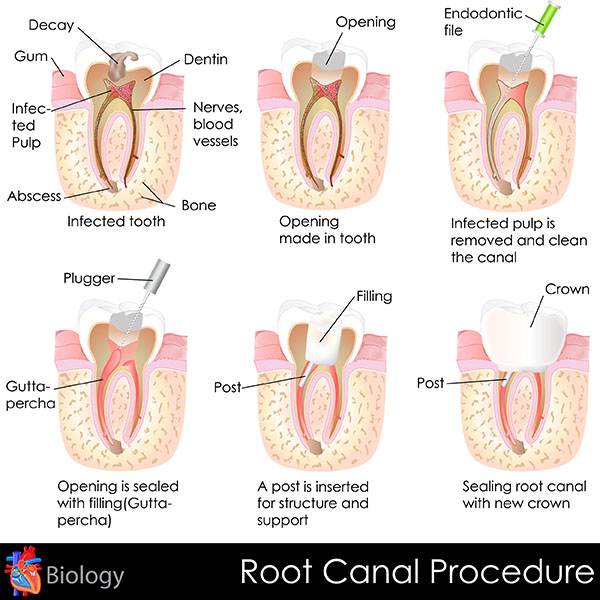What is a Root Canal Treatment?

A root canal treatment is often needed in dental patients who have an infection deep inside the tooth’s root. Many root canal patients experience anxiety centered around a root canal treatment, as they are not familiar with the procedure and do not know what to expect, but the procedure is usually not as invasive as the patient anticipated going in.
Root canal treatment
By having a full understanding as to what a root canal treatment procedure is, the purpose of a root canal treatment and how the entire process and aftercare works, patients can calm any anxieties they have about the surgery. The following is everything patients should know about root canal treatment for the procedure.
What is a root canal treatment?
A root canal treatment is a surgical procedure that involves drilling into the root of a tooth and removing any and all infected tooth pulp that exists and then filling the void with a healthier filling material. Although root canal treatment is a surgical procedure, it is a fairly easy procedure to perform for most dentists and oral surgeons, and the risk of complications is very small. By receiving a root canal treatment, patients are able to salvage an infected tooth from becoming loose and falling out.
The purpose of a root canal treatment
There are a number of reasons a dentist might recommend a root canal treatment to a patient. Most commonly, a root canal treatment is performed to remove infected pulp located in the root of a tooth, although there are other reasons a root canal treatment may be needed.
When the root of a tooth becomes infected, eroded or severely damaged, it can cause a severe level of pain and sensitivity, causing the patient to suffer on a daily basis. A root canal treatment can relieve the discomfort and restore the health and function of a person’s tooth.
The process of a root canal treatment
The process of a root canal treatment is fairly simple, and the entire root canal treatment can often be completed within hours, allowing the patient to return home in a timely manner. The first step toward root canal treatment is to be evaluated and diagnosed by a dentist, who is likely to conduct an oral examination and dental X-rays. After the patient and dentist agree to root canal treatment, a time for the treatment is scheduled. During the procedure, the patient is given local anesthesia, after which a small hole is drilled into the tooth’s root the infected pulp is removed and then filled with a healthy, substitute material.
Root canal treatment aftercare
It is important to follow all instructions provided by the dentist for aftercare following a root canal treatment. After treatment, there is an increased chance of some discomfort, and the chance of oral infection is greater as well. Along with the dentist’s specific instructions, be sure to follow a consistent oral care routine and avoid harmful foods and drinks until a full recovery is made.
Are you considering root canal treatment in the Burbank area? Get more root canal treatment information at https://www.mediacenterdental.com.
Check out what others are saying about our dental services on Yelp: Root Canal Treatment.


